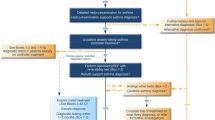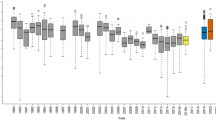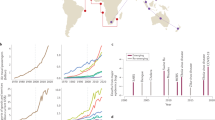Abstract
Aims:
To investigate for the first time the short-term effects of airborne pollen counts on general practitioner (GP) consultations for asthma attacks in the Greater Paris area between 2003-2007.
Methods:
Counts were available for common pollens (Betula, Cupressa, Fraxinus and Poaceae). Weekly data on GP visits for asthma attacks were obtained from the French GP Sentinel Network. A quasi-Poisson regression with generalised additive models was implemented. Short-term effects of pollen counts were assessed using single and multi-pollen models after adjustment for air pollution and influenza.
Results:
A mean weekly incidence rate of 25.4 cases of asthma attacks per 100,000 inhabitants was estimated during the study period. The strongest significant association between asthma attacks and pollen counts was registered for grass (Poaceae) in the same week of asthma attacks, with a slight reduction of the effect observed in the multi-pollen model. Adjusted relative risk for Poaceae was 1.54 (95% CI: 1.33–1.79) with an inter-quartile range increase of 17.6 grains/m3 during the pollen season.
Conclusions:
For the first time, a significant short-term association was observed between Poaceae pollen counts and consultations for asthma attacks as seen by GPs. These findings need to be confirmed by more consistent time-series and investigations on a daily basis.
Similar content being viewed by others
Article PDF
Author information
Authors and Affiliations
Corresponding author
Ethics declarations
Competing interests
No conflict of interest.
Rights and permissions
About this article
Cite this article
Huynh, B., Tuala, S., Turbelin, C. et al. Short-term effects of airborne pollens on asthma attacks as seen by general practitioners in the Greater Paris area, 2003-2007. Prim Care Respir J 19, 254–259 (2010). https://doi.org/10.4104/pcrj.2010.00027
Received:
Revised:
Accepted:
Published:
Issue Date:
DOI: https://doi.org/10.4104/pcrj.2010.00027
This article is cited by
-
Pollen exposure and hospitalization due to asthma exacerbations: daily time series in a European city
International Journal of Biometeorology (2017)
-
Air pollution, aeroallergens and admissions to pediatric emergency room for respiratory reasons in Turin, northwestern Italy
BMC Public Health (2016)
-
Prevalence of asthma symptoms in schoolchildren, and climate in west European countries: an ecologic study
International Journal of Biometeorology (2013)
-
Subtropical grass pollen allergens are important for allergic respiratory diseases in subtropical regions
Clinical and Translational Allergy (2012)
-
Hay Fever in a Changing Climate: Linking an Internet-Based Diary with Environmental Data
EcoHealth (2012)



